Smart Things Still Don’t Play Well Together
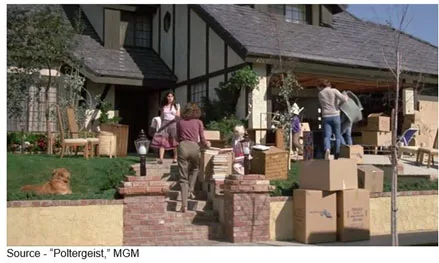
Ever since we bought The Clapper, we’ve been working to make our home smarter; and it hasn’t been an easy or fun journey.
Our home alarm system does the job – we think – but the only time we really know it works is when it notifies the police that something was wrong, and they send us a bill for wasting their time visiting the house.
Our Nest smart thermostat works – we think – because it keeps the house tolerable and lets Google know if we’re in the house, how much energy we’re using so they can tell other folks who offer to solve things like double-pane windows (have them) or better insulation (have it) or other meaningful services.
Our utility company’s smart meter works – we think – because it keeps the meter reader at home, sends us increasingly expensive bills, and gives them a way to monitor whether we’re home or not so they have information they can sell to … someone.
But Alexa has been a welcome addition because finally, we have someone in the house who actually listens to us.
Kids don’t, and the wife says, “Uh huh” and then keeps doing whatever she was doing.
Thanks Alexa … You’re welcome.
The smart home has been coming in stumbling phases until Bezos and Pichai got into a fight to see which mega operation was going to dominate our homes.
Amazon got our vote–not because of Echo, Echo Dot, Echo Look, Echo Show, Echo Plus or any of those techie names; but because we could talk to, listen to … Alexa.
Not sure who you talk to/listen to with Google Home because asking Google to do anything just doesn’t sound friendly. Heck, even saying Siri feels friendlier than “Hey Google.”
Of course, we’re not certain which Alexa we prefer. The one who lost her voice during the Super Bowl or the one that began creepily laughing at us.
 Both were “technical malfunctions” (bugs which we like to call undocumented features) that caused minor consumer uprisings until a patch was issued.
Both were “technical malfunctions” (bugs which we like to call undocumented features) that caused minor consumer uprisings until a patch was issued.
What’s the big problem?
It was a simple software bug and we’re seeing them all the time as we push technology and push AI beyond simple, repetitive tasks.
We know AI is going to make our lives easier/better; but jeez, we’re putting a helluva’ lot of faith in a technology that even the expert experts say is in its infancy.
That’s why burger flipping robots flip burgers cheese down, smart cars crash into things, robot warehouse pickers ship the wrong stuff, heavy AI scriptwriting makes crappy movies and AI guided trains refuse to open doors.
Stuff happens.
But who can get mad at a smart speaker that messes up when she has such a friendly name as Alexa?
Didn’t think so, at least not for long, because she’s a member of the household.

Especially since she does so many things for us … gives us the music we ask for; tunes in the news; delivers the movie or TV show we want; keeps track of our calendar; sets the cooking timer; answers questions and yes, is starting to handle our grocery shopping at Whole Foods.
comScore was right, “The smart speaker is the gateway device to enabling a smart home.”
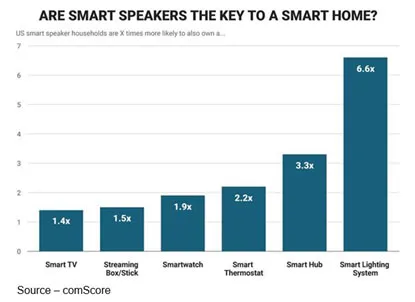
Now, we have to upgrade our doorbell to Ring, so we can see who’s there – walking to the door and answering it is such a pain – and an Alexi-enabled thermostat is on its way.
At least for now we’re not ready to redo our bathroom – we can flush the toilet and draw a bath or test the shower with our finger before we jump in.

One of the biggest problems with the smart home is that everyone wants a walled garden.
Google wants their Google Home to only talk with Google-compliant things. Amazon doesn’t even recognize those guys’ stuff on their site and at least they give lip service to Apple’s homekit (if you hunt hard enough).
Cutting the price of their smart speakers was just the move folks needed to begin their journey into the smart home of tomorrow.
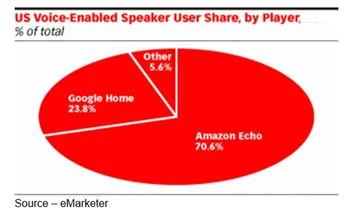
And once you get used to talking in a normal, civil voice to Alexa in the family room, it seems ridiculous to holler to her from the bedroom, bathroom, kitchen or home office so … yep, you buy one for every room in the house.
Amazon has been very willing to work with Intel, Qualcomm, NXP and others to implement their API (application program interface) into their SOCs (systems on a chip) which can then be designed into Kohler, GE, LG and a growing list of new products that will fit into your old home.
And just so your car doesn’t feel left out; Ford, Jeep, Mini, BMW and probably others are Alexa ready.
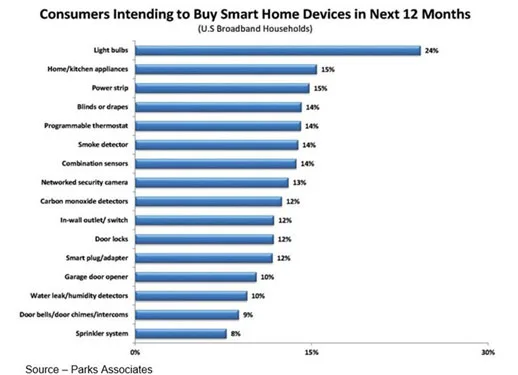
Of course, getting to your smart home isn’t going to be easy, according to a recent report by iQor:
- Nearly one in four consumers dealing with a device issue simply gave up and returned the product for a refund
- Consumers deal with an average of 2.1 companies, over 2.7 sessions and with 3.1 different people as they install their new devices
- On average, consumers spend 1.5 hours resolving device issues and one hour working with customer service
- More than half of consumers (59 percent) read the instructions/manual provided as their first step to solve an issue
- One in five (14 percent) asked a friend or family member for help
Translation? It ain’t plug-and-play!
But the great thing is, once it’s done, you get to share more and more of your information with Amazon – and other folks – so they can continue to expand/improve their data analytics to offer you more recommendations on what you need to buy before you know you need to buy it!
We were recently told that this slow home evolution is a good thing because smarter appliances can predict our needs, adjust accordingly and accommodate the needs.
In other words, we can have a new relationship with our home and the appliances so they aren’t just dumb boxes but are add meaning/value to our lives.
What was the person smoking?
We prefer our relationships to be with real people!
And did you forget about Alexa’s creepy laugh?
According to an Accenture report posted early this year, 47 percent of those surveyed noted that privacy and security were keeping them from implementing smart home technology.
At the recent HPA Tech Retreat, industry analyst Pete Putman asked for a show of hands of attendees who thought having everything in their homes connected was a good thing.
There weren’t a lot of hands raised.
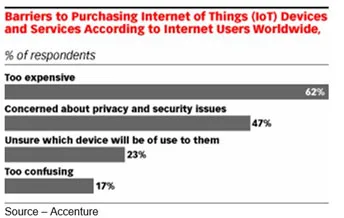
Yes, there are interoperability challenges, but the big hurdle is to have devices that are secure and keep your personal data private.
Almost everyone knows about the theft of personal information from Equifax, OPM, Anthem and others; and they supposedly have security and privacy experts.
Poor home passwords, crackable factory-default passwords and malicious bots make it way too easy to share your information with the world.
Most of the established firms offering home-connected products never had to deal with cybersecurity; and the startups are more focused on getting their cool thing sold than on something that isn’t a big problem like privacy holes.
They can patch it when someone complains, it’s a work in progress or in the next non-backward compatible solution.
 While the convenience may be neat, something that’s safe and secure is neater.
While the convenience may be neat, something that’s safe and secure is neater.
Then you won’t have to panic like Carol Anne, “Talk louder, I can’t hear you! Hey, hello! Hello, I can’t hear you! Five. Yes. Yes. I don’t know. I don’t know.”
# # #